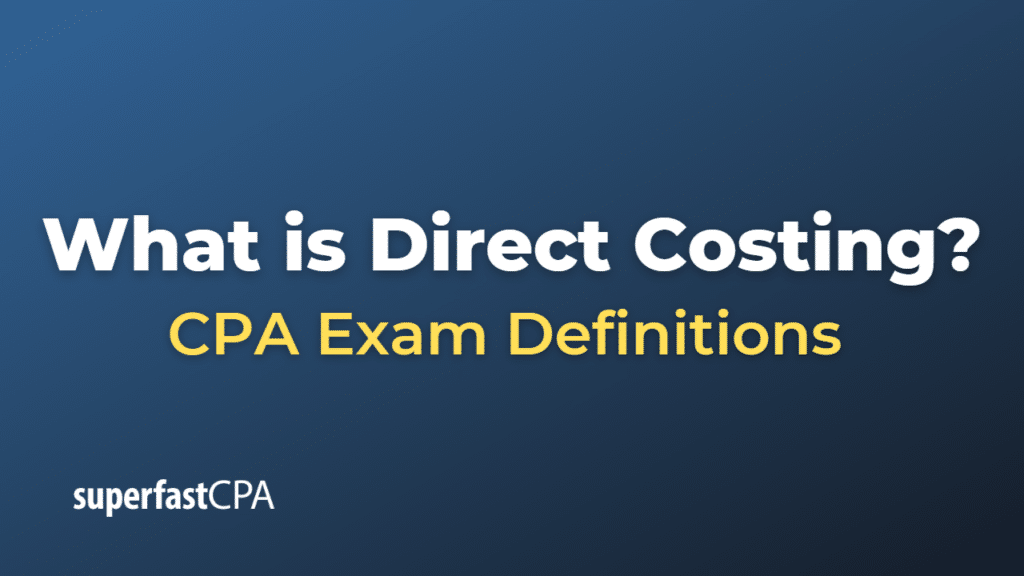Direct Costing
Direct costing, also known as variable costing or marginal costing, is a method used in cost accounting and management accounting. In this approach, only variable costs (direct materials, direct labor, and variable overhead) are considered as product costs and included in the cost of goods sold. Fixed costs, on the other hand, are treated as period costs and expensed in the period they occur, irrespective of the production volume.
The concept behind direct costing is that fixed costs will occur regardless of the level of output, while variable costs only occur with the production of goods or services.
For instance, let’s consider a factory. The cost of direct materials and direct labor used in producing goods would be considered as variable costs since they would increase with the production volume. However, the cost of rent for the factory or the salary of the factory manager would be considered as fixed costs because they would remain the same irrespective of how many goods are produced.
Direct costing is frequently used for internal reporting and decision-making, such as pricing decisions, product mix decisions, make-or-buy decisions, and short-term production decisions, because it helps to highlight the contribution of each product or service towards covering fixed costs and generating profits.
However, for external reporting and tax purposes, absorption costing (which includes both variable and fixed production costs in the cost of goods sold) is generally required, as it adheres to the matching principle by associating all manufacturing costs with the goods produced.
Example of Direct Costing
Let’s consider a company that manufactures a single product. We’ll look at how direct costing would work for this company.
Let’s say the company has the following costs per unit:
- Direct materials: $5
- Direct labor: $10
- Variable manufacturing overhead: $3
- Fixed manufacturing overhead: $7
The company produces 1,000 units in a month, and the fixed manufacturing overhead for that month is $7,000.
Under direct costing, the cost per unit would include only the variable costs: direct materials, direct labor, and variable manufacturing overhead. So the cost per unit would be $5 (direct materials) + $10 (direct labor) + $3 (variable overhead) = $18.
The fixed manufacturing overhead of $7,000 would be expensed in the period it occurred and not included in the cost of the units produced. So if the company sold 800 units during the month, the cost of goods sold would be 800 units * $18/unit = $14,400.
The unsold units would be valued at the variable production cost of $18 per unit in the inventory. Fixed costs are treated as period costs and expensed in the period they are incurred.
This differs from absorption costing, where fixed manufacturing overhead is allocated to each unit produced and included in the cost of goods sold and inventory. In our example, under absorption costing, the cost per unit would be $5 (direct materials) + $10 (direct labor) + $3 (variable overhead) + $7 (fixed overhead) = $25.
Direct costing can be a valuable tool for internal decision-making, but for financial reporting and tax purposes, companies typically use absorption costing, which adheres to generally accepted accounting principles (GAAP).













